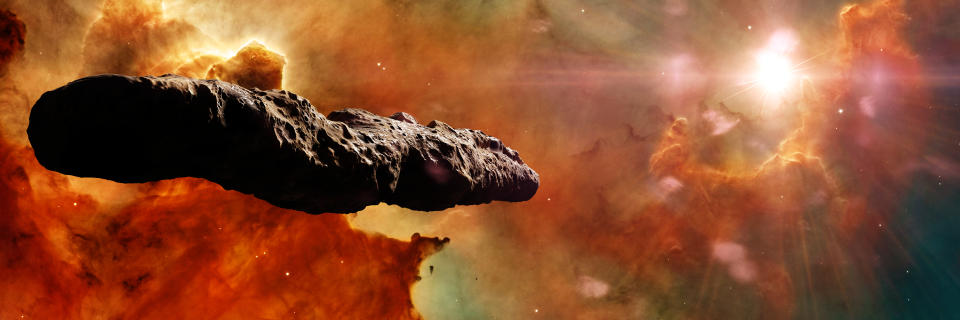New theory over mysterious ‘cigar’ asteroid which visited our solar system

The space rock named `Oumuamua was the first known interstellar object to visit our solar system, and made headlines around the world in 2017.
When it flew past our sun, the world marvelled over its elongated, cigar-shaped body which some scientists initially suggested might be an alien probe.
But now a new theory may explain what it really is: astronomers at Yale and the University of Chicago say it’s a hydrogen iceberg.
What’s more, there might be many more of them out there, forming in the dense cores of molecular clouds throughout our Milky Way galaxy, the researchers suggest.
Read more: Comet or asteroid? Cigar asteroid shows we may need a new classification
A study based on the researchers’ findings has been accepted by the Astrophysical Journal Letters and appears on the preprint website arXiv.
The researchers believe that the idea that it’s a block of hydrogen ice could explain many of the weird properties that led scientists to label it a possible alien spacecraft.
Professor Gregory Laughlin of Yale said, “We developed a theory that explains all of ‘Oumuamua’s weird properties.
“We show that it was likely composed of hydrogen ice. This is a new type of object, but it looks like there may be many more of them showing up, going forward.”
Researchers at the University of Hawaii first discovered ‘Oumuamua in 2017, but as ‘Oumuamua hurtled through the inner part of the solar system, astronomers noticed it had several unusual properties.
Read more: Astronomers admit cigar asteroid “is still a mystery”
It varied rapidly in brightness, suggesting it was either saucer shaped or cigar shaped.
Also, it accelerated in a fashion similar to a comet, yet it showed no evidence of emitting gas or the fine billows of dust normally associated with comets.
Laughlin and Seligman said ‘Oumuamua’s behavior can be explained if it is composed of hydrogen ice.
“As ‘Oumuamua passed close to the Sun and received its warmth, melting hydrogen would have rapidly boiled off the icy surface providing the observed acceleration and also winnowing ‘Oumuamua down to its weird, elongated shape — much as a bar of soap becomes a thin sliver after many uses in the shower.”
The study theorizes that iceberg-like objects made of hydrogen can potentially form in the dense cores of molecular clouds that pervade the Milky Way galaxy and give rise to new stars and planetary systems.
Laughlin said, “Their presence would be an accurate probe of the conditions in the dark recesses of star-forming clouds and provide a critical new clue for understanding the earliest phases of the still-mysterious processes that generate the birth of stars and their accompanying planets.”

 Yahoo Movies
Yahoo Movies 
